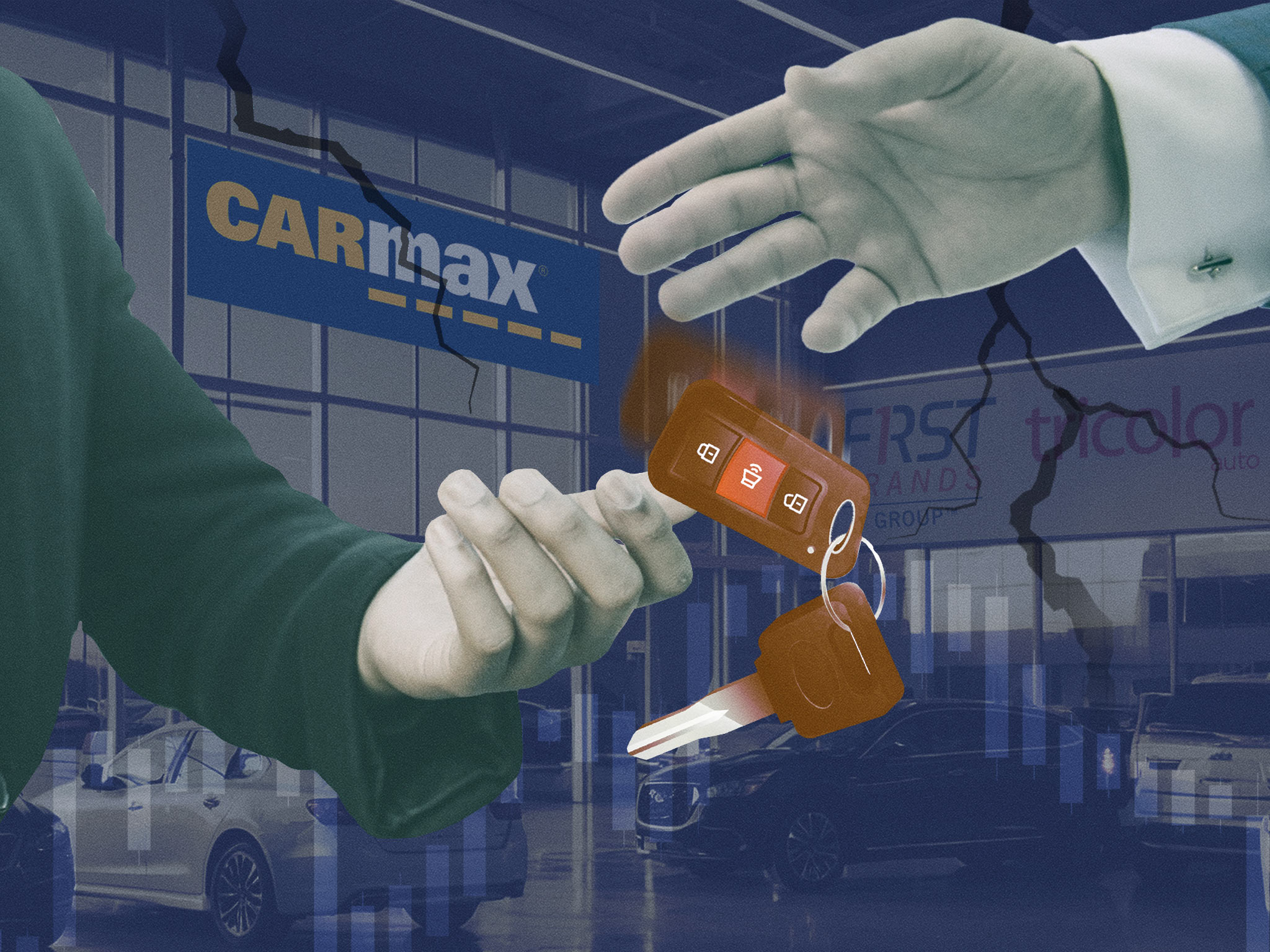Troubles have arisen in the automobile-loan market during recent weeks. Auto parts supplier First Brands and subprime auto lender Tricolor Auto Acceptance have filed for bankruptcy.
Tricolor said it suffered from deteriorating repayment rates and tighter funding, while First Brands endured falling used car demand and increasing defaults. The First Brands collapse has turned into quite a saga, with allegations of wrongdoing against the company’s owner/founder/CEO and a claim that $2 billion of its assets disappeared.
Meanwhile, at CarMax (NYSE: KMX), comparable used-vehicle sales dropped 6% in the quarter ended Aug. 31 from a year earlier. Loan-loss provisions soared 26% to $142 million. That has helped push the share price down 27% in the last month.
These developments have raised investor fears about the consumer credit market. Tracy Chen, a fixed-income portfolio manager at Franklin Templeton’s Brandywine Global unit, offers an excellent analysis of what’s happening.
“Recent stress in the auto finance space is raising early red flags for US consumer credit,” she wrote in a commentary. “Individually, these [three situations] could be dismissed as isolated cases of poor underwriting. But together, they potentially reflect rising distress among subprime borrowers, even as the broader economy remains stable.”
Not a systemic issue
Trouble in the subprime auto loan sector doesn’t endanger the wider financial system, as it accounted for just 16% of auto loan originations in 2024, Chen noted. But, “the rising stress is notable, and the divergence is clear,” she said. “Prime borrowers remain stable, while subprime delinquencies are climbing, an early sign of a credit cycle shift.”
On the plus side, consumer spending and net worth remain solid, buoyed by upcoming tax relief, interest rate cuts, and artificial intelligence-driven growth, she said.
“Yet under the surface, a K-shaped economy is becoming more pronounced, where the financial health of wealthier households continues to improve, while lower-income groups face growing strain.”
Consumer spending could weaken, as tariffs and inflation depress income, Chen said. “Income growth [already] is cooling, though wealth remains elevated and concentrated among top earners.”
The top 20% of households by income account for 70% of the country’s net worth. But the less wealthy suffer from inflation and sluggish wage growth. Young Americans are especially vulnerable, thanks to student-loan debt, unaffordable homes and lack of job security, owing to AI automation, Chen said.
Stress test for market
You can track four indicators to see if these problems lead to systemic stress for the consumer credit market, she said.
- Spreads of high-yield bonds over Treasuries, a measure of risk in credit markets. These spreads are now low and thus benign she said.
- Stock prices of private equity managers. “Underperformance may reflect some distress and the ensuing tightening of lending in private credit markets and leveraged loans,” Chen said. There has been underperformance recently. Shares of Blackstone (NYSE: BX), the world’s largest alternative asset manager, have lost 9% in the last month.
- U.S. regional bank stock prices. They are closely tied to consumer credit. “Weaknesses here could indicate rising consumer loan losses or deposit pressures,” she said. The stocks have underperformed the S&P 500 so far this year.
- Asset-backed security yield spreads over Treasuries. “Widening spreads on auto loan and credit card-backed securities reflect investor anxiety over consumer credit quality.” But these spreads are stable now.
Putting all this together, it looks like cracks have emerged in the consumer credit market, but it’s not clear how large the cracks will grow.




Comments